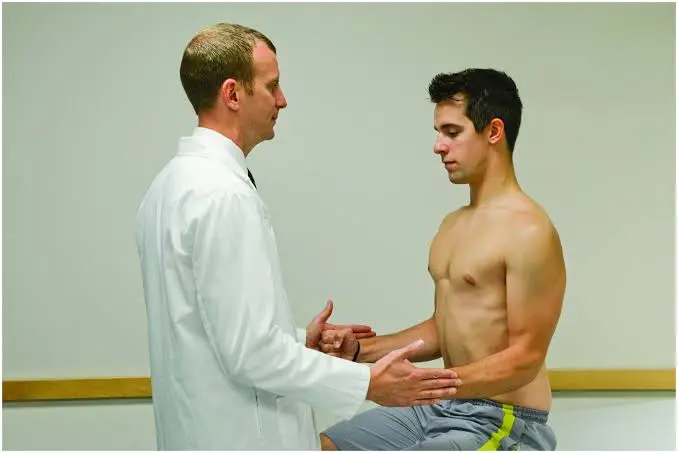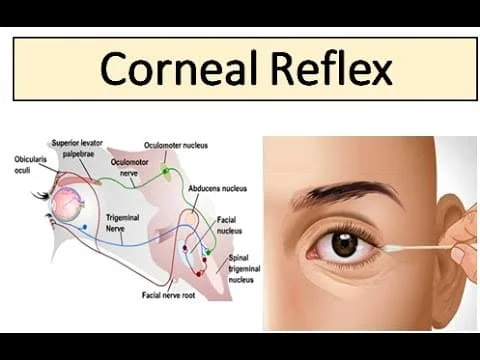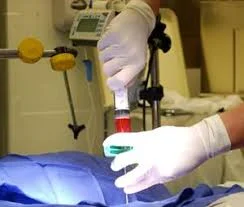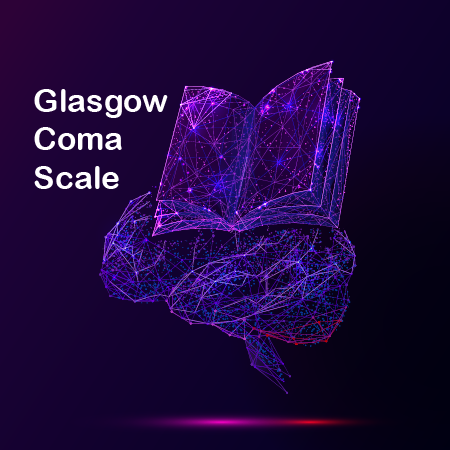Infraspinatus Muscle Testing
Table of Contents
Introduction
The dysfunction of the rotator cuff muscles causes impingement of the shoulder when the head of the humorous superiorly migrates during arm elevation. Infrapinatus muscle is frequently implicated in shoulder pathologies such as rotator cuff tears and shoulder impingement.
To determine whether the infraspinatus muscle is involved in rotator cuff pathologies like sub acromial impingement or rotator cuff tears, one can perform the infraspinatus test.
One of the four muscles that make up the shoulder’s rotator cuff is a thick, triangular muscle. A large, triangular muscle, the infraspinatus occupies most of the scapula’s dorsal surface. It connects the proximal humerus to the scapula, originating primarily from the infraspinatus fossa.
The infraspinatus muscle, which is a part of the rotator cuff muscles, is primarily responsible for the external rotation of the humerus and for stabilizing the glenohumeral, or shoulder joint.
Function of the infraspinatus muscle
Primary Role: External rotation of the shoulder joint and lateral rotation of the arm
A functional musculotendinous unit that both stabilizes and moves the shoulder joint makes up the rotator cuff muscles. This muscular system’s job is to provide a broad range of arm motion while keeping the humerus’ head centrally located within the glenoid cavity.
The glenohumeral joint’s fibrous capsule combines with the tendons of the rotator cuff muscles to form the rotator capsule, a tendinous sleeve. Every muscle has a pulling axis that produces a specific movement (prime mover). When all the muscles work together through the rotator capsule, they create a compression of the concavity. By translating forces, the rotator cuff forced the humerus into the glenoid fossa’s concavity, stabilizing the joint and preventing dislocation.
When the arm is abducted, the teres minor and infraspinatus muscles work together to stabilize the humeral head across from the glenoid fossa and to resist the deltoid muscle’s upward pull. This prevents the humeral head from moving upward and the coracoid process from being impinged upon.
Although the supraspinatus applauds the infraspinatus movement, its significant contribution to it is debatable. The infraspinatus is the humerus’ strongest lateral rotator, and it functions as a prime mover. The primary purpose of this action is to prepare the upper limb for external rotation and backward extension on the glenohumeral joint.
Clinical Significance of infraspinatus muscle
Compression on the Suprascapular nerve near the scapular notch is typically indicated by atrophy in the supraspinatus and infraspinatus muscles. Overhead athletes and SLAP lesions can exhibit this type of compression. Although isolated atrophy or weakness in the infraspinatus muscle may be observed in cases of Suprascapular nerve compression in the spinoglenoid notch, ganglion cysts are typically the cause of this type of nerve compression.
Pain in the anterior and middle deltoid regions is linked to trigger points in the infraspinatus muscle. Shoulder pain may be alleviated by myofascial release techniques applied to the infraspinatus muscle.
- Tendinitis in Infraspinatus
A major source of shoulder pain, infraspinatus tendinitis is a debilitating illness that is increasingly prevalent after middle age. Overuse of resistance is the main cause.
The degenerative process of the rotator cuff muscle tendon, which is a result of repetitive strains and overloading from sports or work-related activities, affects the tendons of the musculoskeletal system.
As the muscle tendon travels between the acromion and the humeral head, it often impinges below the acromion. It is a multifactorial mechanism. The Full Can Test and the Empty Can Test are two orthopedic examination methods commonly used to assess the integrity of the infraspinatus muscle and tendon or infraspinatus impingement. Typically, the test can be taken while standing or sitting.
Regarding the side that needs testing The examiner’s one hand serves to stabilise the shoulder girdle. The arm to be examined is in complete internal rotation with the thumb pointed downward as though emptying a beverage can, and it is advancing into 90 degrees of abduction in the plane of the scapula (about 30 degrees of forwarding flexion). The patient resisted when the examiner applied downward pressure to the superior aspect of the distal forearm with his other hand. If the infraspinatus muscle exhibits severe pain and/or weakness, the Empty Can Test is deemed positive.
The rotator cuff is a group of four muscles that surrounds the joint between the scapula and shoulder. Teres minor, subscapularis, supraspinatus, and infraspinatus are the four muscles.
Each muscle is also known by its first name, which is SITS. They help to stabilize or strengthen the shoulder joint. If this muscle group is injured, rotator cuff injuries may result.
- Sub acromion Impingement
Any non-traumatic, mostly unilateral shoulder injury that produces localized discomfort around the acromion and may get worse during or after tugging on the arm is referred to as subacromial pain syndrome. Pain associated with any lesion inside a structure or the structures within the Subacromial Space is essentially encompassed by this comprehensive phrase. Therefore, all disorders about subacromial structures, such as tendinitis Caldaria, subacromial bursitis, rotator cuff tendinopathy, rotator cuff tears, biceps tendinopathy, or tendon cuff degeneration, are included in the SAPS.
- Rupture and tear of the infraspinatus muscle
A rupture and tear of the infraspinatus muscle’s tendon is known as an infraspinatus tear. The part of the shoulder’s rotator cuff is called the infraspinatus. It is typically used in conjunction with another rotator cuff muscle rupture. This will manifest as a partial or full-thickness rip and happen as a result of trauma or recurrent micro-trauma. The rip frequently arises as an avulsion from the larger tuberosity or in the tendon.
When the scapular muscles are too weak or paralyzed to stabilize the scapula, the term “winged scapula” (also known as scapula alata) is preferred. Lastly, the scapula’s medial side border protrudes, like wings. It occurs due to neurological causes.
Diagnosis and Examination for infraspinatus muscle
Special test
- Test for rotator cuff injuries
- The malfunctioning of the rotator cuff muscles causes impingement of the shoulder when the head of the humorous superiorly migrates during arm elevation. Infrapinatus muscle is frequently implicated in shoulder diseases such as rotator cuff injuries and shoulder impingement.
- To determine whether the infraspinatus muscle is involved in rotator cuff diseases including subacromial impingement or rotator cuff tears, one can perform the Infraspinatus test.
Test procedure
- The patient’s arms should be by his sides, with their elbows bent to a 90-degree angle but not quite touching his trunk. The dorsum of the patient’s hands is where the examiner places his hand.
- When there is discomfort weakness or pain during external rotation, the test is considered positive.
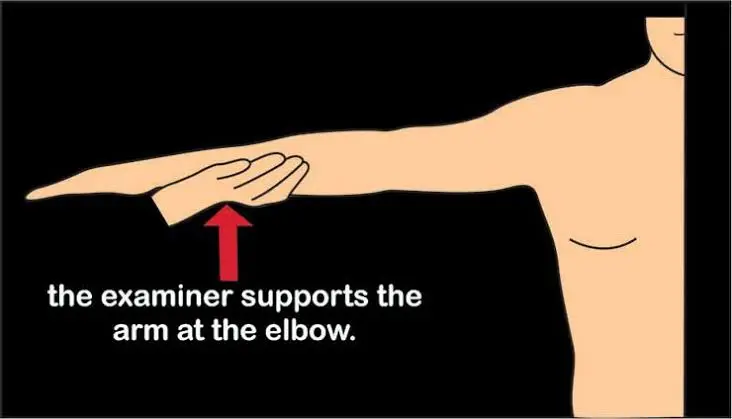
- The patient should be in a standing or sitting position when you do the drop arm test. The afflicted arm should be passively rotated 90 degrees in both directions.
- After that, instruct your patient to maintain this posture and let go of your hand of support.
- If the patient is unable to gradually control the downward movement, this test is positive for full-thickness rips of the supra- and infraspinatus, hence the term “drop arm sign.” Stretch for the twelve to fifteen seconds.
- Other frequent orthopedic tests used to evaluate rotator cuff injuries that are full-thickness include infraspinatus muscle.
3. Hornblower’s Sign
- Horn blower’s Sign or the Horn blower’s Test, is a popular specialized examination used to evaluate and inspect the shoulder. This is an extremely trustworthy test for evaluating the strength of the rotator cuff muscles. In this test, the infraspinatus muscle, infraspinatus tendon, and teres minor muscle are the structures that are tested.
- It has been demonstrated that the Horn blower’s Test is a valid and trustworthy way to assess teres minor integrity. The patient may be asked to stand or sit during this test. The arm that will be evaluated is raised to a scapular plane elevation of 90 degrees of shoulder abduction. The elbow is going to be in a 90-degree flexion. and rotates outwards. After that, the physician will rotate the forearm or wrist internally. In an attempt to externally rotate the shoulder, the patient will have to oppose movement.
- The test result is considered affirmative if a weakening is felt and if there is a noticeable inability to rotate externally. As the name Hornblower’s Sign implies, teres minor rotator cuff damage may be indicated if the patient is unable to raise their arm and place their hand to their lips as they are blowing a horn.
4. Sign of Rotator Cuff Lag
- The drop arm test and the rotator cuff lag signals are comparable special tests. They function essentially like a drop arm for shoulder external rotation as opposed to elevation.
- Larger tears in the rotator cuff often spread from the supraspinatus into the infraspinatus. The external rotators’ inability to sustain the arm against gravity is shown by the lag symptoms.
- The literature suggests that the test is specific, with specificity ranging from 88 to 100% with multiple trials falling within the 90% range. Studies have shown varying degrees of sensitivity, with 45–56% being able to identify full-thickness supraspinatus tears, 70% detecting infraspinatus tears, and 100% detecting teres minor tears. Since it’s a better test for larger tears extending, this makes sense to me.
5. Apley scratch test
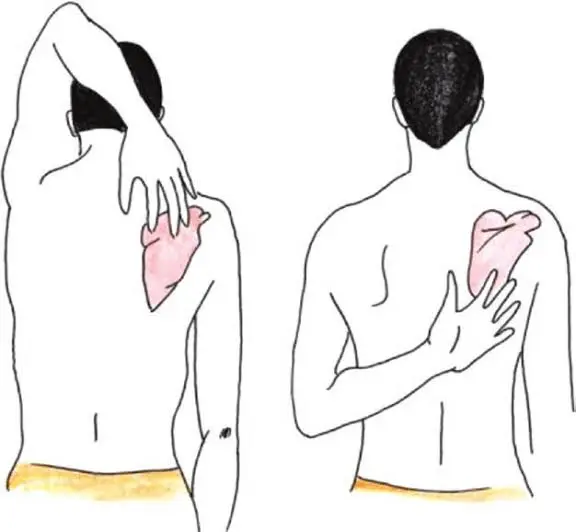
The technique is to reach over your shoulder with one hand and behind your back with the other. What it looks for: Limited range of motion or rotator cuff injuries A better outcome than the undamaged side in terms of pain or limitation. Stretch for the twelve to fifteen seconds.
6. Jobe’s test (empty can test)
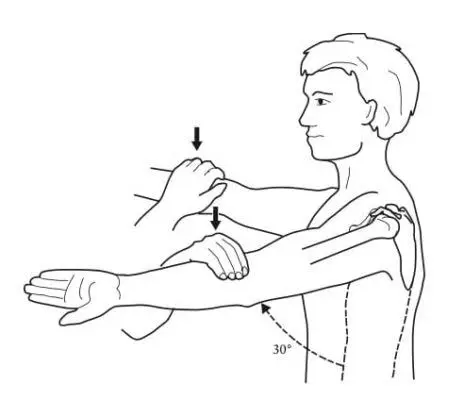
- How to do it: With your thumbs pointing down, try to raise your arms against the resistance of a doctor.
- What it evaluates: Infraspinatus or supraspinatus rotator cuff injuries
- Positive outcome: Weakness or pain on the side that was injured
- Stretch for the twelve to fifteen seconds.
Imaging examinations
- To diagnose your torn rotator cuff, your doctor may order imaging tests such as an MRI, ultrasound, or x-ray.
- While X-rays cannot detect a torn rotator cuff, they can rule out other potential discomfort sources such as bone spurs. In comparison with other investigation megnetic resonance technique give appropriate diagnose of the condition.
- Using ultrasounds, you can keep an eye on your arm’s muscles and tendons as you move it and to your other arm.
- An MRI uses radio waves to provide a picture of your shoulder’s muscles, connective tissue, and bone.
FAQs
It connects laterally to the middle facet of the larger tubercle of the humerus and medially to the infraspinatus fossa of the scapula.
Reattaching the healthy tendon to the shoulder complex’s insertion site would be part of this.
On the dorsal surface of the scapula, deep to the trapezius, is the infraspinatus muscle.
References
- Infraspinatus test. (n.d.). Physiopedia. https://www.physio-pedia.com/Infraspinatus_Test
- Ladva, V. (2023a, July 8). Special test for the Infraspinatus Tear/ Bicipital Tendinitis. Mobile Physiotherapy Clinic. https://mobilephysiotherapyclinic.in/special-test-for-the-infraspinatus-tear-bicipital-tendinitis/#Infraspinatus_test
- Verma, R. (2023, July 11). Infraspinatus Test (Latest 2023) physio study. Physio Study. https://physio-study.com/infraspinatus-test/
- The Drop Arm & Hornblower Test for Rotator Cuff Tears | Bangalore Shoulder Institute. (2021, June 22). Bangalore Shoulder Institute. https://bangaloreshoulderinstitute.com/the-drop-arm-hornblower-test-for-rotator-cuff-tears/#
- Orthopedics, B. S. M. V. (n.d.). Shoulder exam – shoulder & elbow – orthobullets. https://www.orthobullets.com/shoulder-and-elbow/3037/shoulder-exam
- Reinold, M. (2020, March 17). Special tests for rotator cuff tears. Mike Reinold. https://mikereinold.com/special-tests-for-rotator-cuff-tears/
- Yetman, D. (2020, September 24). How is a rotator cuff tear diagnosed? Healthline. https://www.healthline.com/health/rotator-cuff-tear-test#special-tests-for-rotator-cuff-tear
- Ebraheim, N., MD. (2017, August 23). Rotator cuff muscle examination. HuffPost. https://www.google.com/amp/s/www.huffpost.com/entry/rotator-cuff-muscle-examination_b_599da035e4b056057bddcfee/amp

